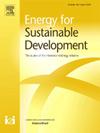Understanding interconnection rule non-compliance: Lessons from South Africa's surge in unauthorised distributed energy resources
IF 4.4
2区 工程技术
Q2 ENERGY & FUELS
引用次数: 0
Abstract
The integration of distributed energy resources (DERs) such as rooftop solar and battery storage into electricity grids poses a regulatory challenge for utilities globally. While interconnection rules are designed to ensure the technical integrity and financial sustainability of power systems, stringent policies and punitive pricing signals have inadvertently led to the proliferation of unauthorised DERs in many parts of the world. Unauthorised DERs pose a range of technical, financial and safety risks to the power system, yet the drivers of non-compliance remains undocumented in the literature. This paper explores the drivers of non-compliance in South Africa, where by 2024 >50 % of behind-the-meter solar capacity is illegally connected to the grid. By quantifying the misalignment of private and public DER value streams, this study identifies key barriers to compliance, including high interconnection costs, lengthy approval processes, and misaligned pricing signals. A comparative case study between three South African municipalities illustrates how different utility governance approaches impact the business case for DER investment. A simple but important finding is that utility approaches can significantly impact a customer's decision to follow the formal interconnection process. A revenue impact modelling exercise revealed the detrimental impacts of unauthorised DERs on utility revenue. These results suggest that, in jurisdictions facing unauthorised DERs, early financial incentives are essential to minimise non-compliant installations and the associated utility revenue erosion. As DER penetration expands into new global regions, these findings are expected to assist utilities and regulators in developing appropriate regulatory frameworks that facilitate the sustainable integration of DERs.
理解不遵守互连规则:来自南非未经授权的分布式能源激增的教训
将屋顶太阳能和电池储能等分布式能源整合到电网中,对全球公用事业公司提出了监管挑战。虽然互连规则旨在确保电力系统的技术完整性和财务可持续性,但严格的政策和惩罚性定价信号无意中导致了未经授权的分布式发电在世界许多地区的扩散。未经授权的der对电力系统构成了一系列技术、财务和安全风险,但文献中未记载不合规的驱动因素。本文探讨了南非不合规的驱动因素,到2024年,南非50%的太阳能发电能力被非法接入电网。通过量化私有和公共DER价值流的偏差,本研究确定了合规的主要障碍,包括高互连成本、冗长的审批流程和不一致的定价信号。南非三个城市之间的比较案例研究说明了不同的公用事业治理方法如何影响DER投资的商业案例。一个简单但重要的发现是,效用方法可以显著影响客户遵循正式互连过程的决定。一项收入影响建模工作揭示了未经授权的der对公用事业收入的有害影响。这些结果表明,在面临未经授权的der的司法管辖区,早期的财政激励对于最大限度地减少不合规的安装和相关的公用事业收入侵蚀至关重要。随着可再生能源的渗透扩展到新的全球区域,这些发现有望帮助公用事业和监管机构制定适当的监管框架,促进可再生能源的可持续整合。
本文章由计算机程序翻译,如有差异,请以英文原文为准。
求助全文
约1分钟内获得全文
求助全文
来源期刊

Energy for Sustainable Development
ENERGY & FUELS-ENERGY & FUELS
CiteScore
8.10
自引率
9.10%
发文量
187
审稿时长
6-12 weeks
期刊介绍:
Published on behalf of the International Energy Initiative, Energy for Sustainable Development is the journal for decision makers, managers, consultants, policy makers, planners and researchers in both government and non-government organizations. It publishes original research and reviews about energy in developing countries, sustainable development, energy resources, technologies, policies and interactions.
 求助内容:
求助内容: 应助结果提醒方式:
应助结果提醒方式:


